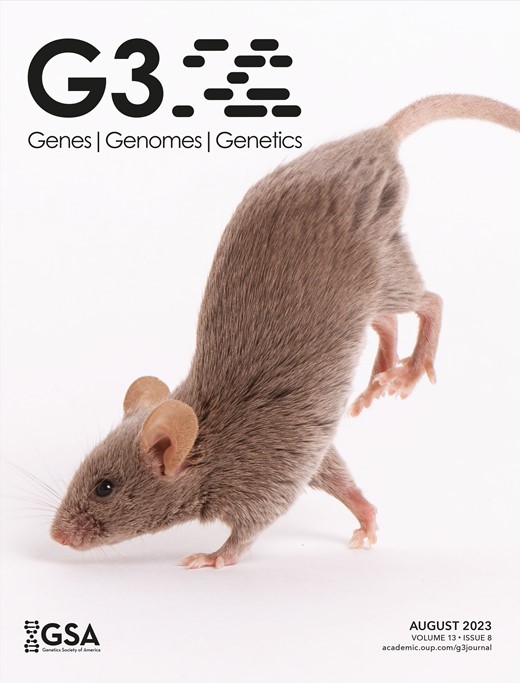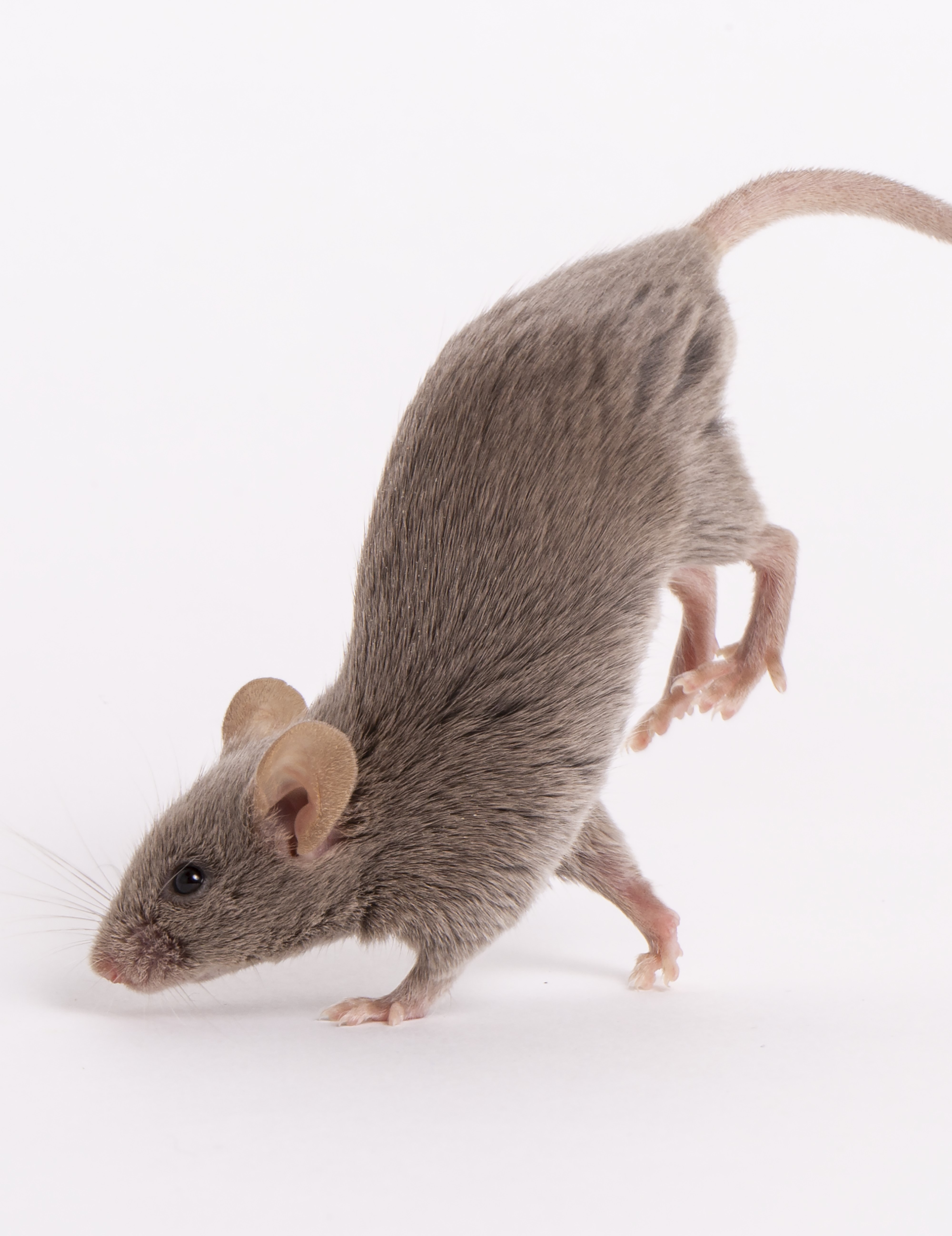
Cover image

Volume 13, Issue 8, August 2023
Editorial
Highlighting rare disease research with a GENETICS and G3 series on genetic models of rare diseases
Genetic Models of Rare Diseases
Altered phenotypes due to genetic interaction between the mouse phosphoinositide biosynthesis genes Fig4 and Pip4k2c
Cao et al., demonstrate partial rescue of deleterious phenotypes in the mouse null Fig4 mutant by heterozygous loss of function of the kinase Pip4k2c.
In vivo characterization of the critical interaction between the RNA exosome and the essential RNA helicase Mtr4 in Saccharomyces cerevisiae
This study uses Saccharomyces cerevisiae to model a missense mutation in the RNA exosome gene EXOSC2, which was identified in a patient with multiple myeloma. This analysis of Rrp4, the budding yeast EXCOSC2 ortholog, provides insight into the interaction of Rrp4 with a key RNA exosome cofactor, the RNA helicase Mtr4.
The human RAP1 and GFAPɛ proteins increase γ-secretase activity in a yeast model system
Alzheimer's disease (AD) is an age-related disorder that results in progressive cognitive impairment and memory loss. Deposition of amyloid β (Aβ) peptides in senile plaques is a hallmark of AD. γ-secretase produces Aβ peptides, mostly as the soluble Aβ40 with fewer insoluble Aβ42 peptides. Rare, early-onset AD (EOAD) occurs in individuals under 60 years of age. Most EOAD cases are due to unknown genetic causes, but a subset is due to mutations in the genes encoding the amyloid precursor protein that is processed into Aβ peptides or the presenilins (PS1 and PS2) that process APP. PS1 interacts with the epsilon isoform of glial fibrillary acidic protein (GFAPɛ), a protein found in the subventricular zone of the brain. We have found that GFAPɛ interacts with the telomere protection factor RAP1 (TERF2IP). RAP1 can also interact with PS1 alone or with GFAPɛ in vitro. Our data show that the nuclear protein RAP1 has an extratelomeric role in the cytoplasm through its interactions with GFAPɛ and PS1. GFAPɛ coprecipitated with RAP1 from human cell extracts. RAP1, GFAPɛ, and PS1 all colocalized in human SH-SY5Y cells. Using a genetic model of the γ-secretase complex in Saccharomyces cerevisiae, RAP1 increased γ-secretase activity, and this was potentiated by GFAPɛ. Our studies are the first to connect RAP1 with an age-related disorder.
Investigation
A DEAD-box RNA helicase mediates meiotic silencing by unpaired DNA
(Quasi) multitask support vector regression with heuristic hyperparameter optimization for whole-genome prediction of complex traits: a case study with carcass traits in broilers
Characterization of a novel polyextremotolerant fungus, Exophiala viscosa, with insights into its melanin regulation and ecological niche
Transcriptomic approach to uncover dynamic events in the development of mid-season sunburn in apple fruit
Impact of 1,6-hexanediol on Schizosaccharomyces pombe genome stability
Improving the annotation of the cattle genome by annotating transcription start sites in a diverse set of tissues and populations using Cap Analysis Gene Expression sequencing
Beyond the reference: gene expression variation and transcriptional response to RNA interference in Caenorhabditis elegans
This study evaluates how genetic differences among five wild strains affect gene expression in C. elegans, in general and after inducing the RNA interference (RNAi) response. This investigation revealed substantial differences in gene expression across strains and a complex and strain specific transcriptional response to RNAi. Gene expression in C. elegans varies, generally and in response to RNAi, such that choice of strain may meaningfully influence scientific conclusions. Bell et al., introduce a resource for exploring this dataset at https://wildworm.biosci.gatech.edu/rnai/.


